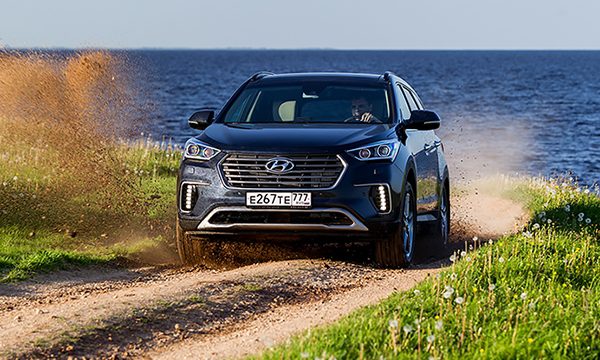
Test drive Hyundai Grand Santa Fe
The suspension of the updated Hyundai Grand Santa Fe allows you to rush along the "tank" tracks with a decent speed. And this is not the only change in the updated crossover - but it is the most important
The roads in the Novgorod region are even worse than in Vladimir, where, according to the local mayor, the asphalt "does not take root, because the earth is tearing it away." Not otherwise, on every full moon a KV-1s tank rolls off the pedestal near the village of Parfino by itself, crushes the roadway with heavy tracks and fires it from a cannon. Nevertheless, the suspension of the updated Hyundai Grand Santa Fe allows you to rush along the "tank" tracks with a decent speed. And this is not the only change in the updated crossover - but it is the most important one.
The Santa Fe family was originally equipped with a too delicate suspension. As soon as she moved off the asphalt, she stopped taking blows, and on the waves she swayed the body. Last year, the settings of the junior crossover were revised, now it is the senior's turn. During the renovation, Hyundai took into account the wishes of Russian customers. However, not only they were dissatisfied, therefore, with the updated suspension, the cars will be supplied to other markets. Crossover settings will continue to be softer in the US and tougher in Europe.
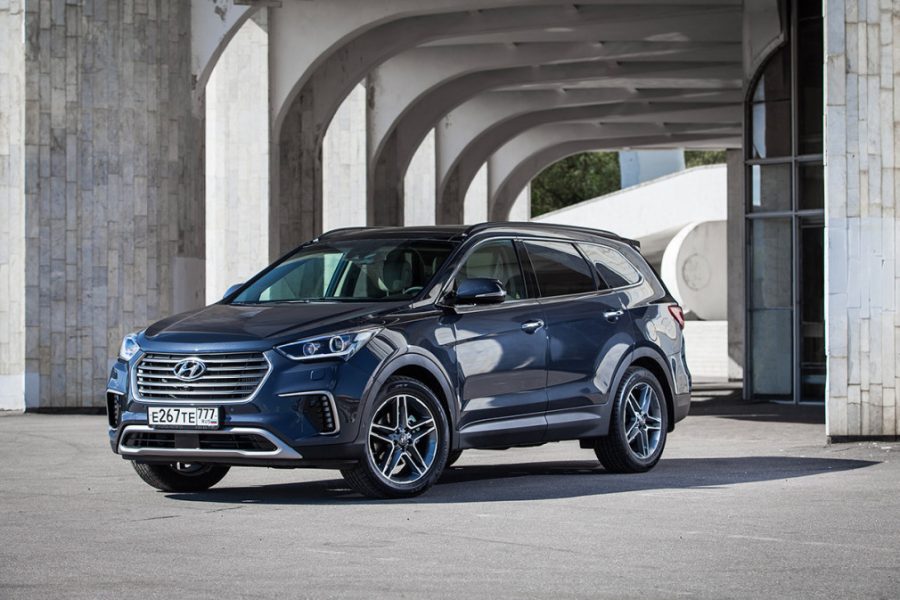
The result is tangible, it is enough to leave the M10 highway. Oscillations and breakdowns were almost defeated, albeit not completely, but on roads teeming with pits and waves, the Grand Santa Fe rides on 19-inch wheels quite confidently. Especially the diesel version: it is heavier than the gasoline version, so the suspension is even tighter. However, the difference with the behavior of a gasoline car appears where the depth and number of holes become threatening. Korean suspension vehicles paid more attention to bad roads, but even in a nightmare they could not dream of such broken asphalt. In less extreme conditions, diesel and gasoline cars behave almost the same.
Aside from the more off-road suspension, the "Grand" lacked rudimentary recognizability. In South Korea, the largest crossover of the Hyundai brand bears a separate name Maxcruz, but in Europe and Russia it is sold as the Grand Santa Fe - marketers found it necessary to emphasize the relationship with the popular mid-size crossover. The platform of the cars is really common and outwardly they are similar - a larger crossover can be guaranteed to be distinguished by a wider third window. But there will be much more differences - both in size and in equipment. Grand Santa Fe is a separate model, although its name can be misleading.
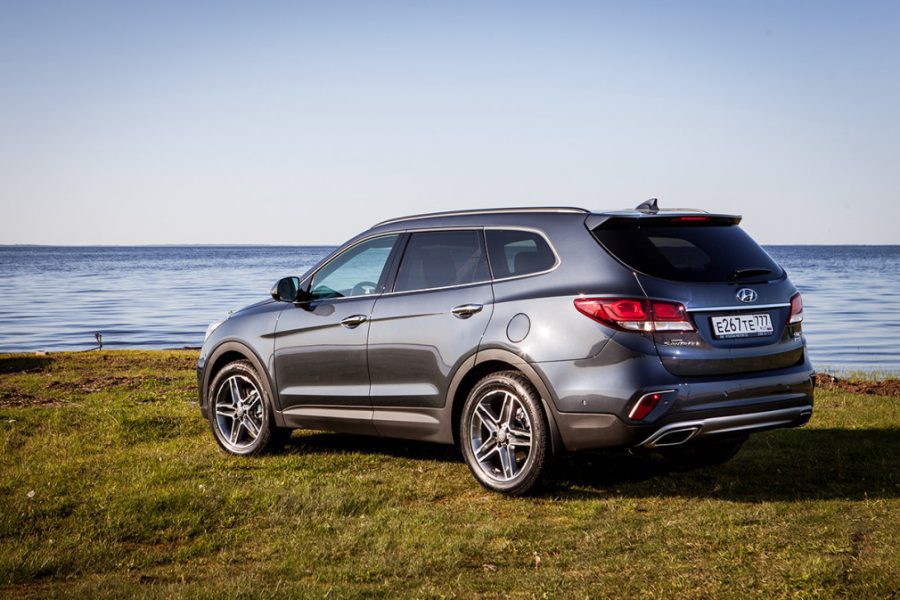
It is a larger car in all directions: it is 205 mm longer, 5 mm wider and 10 mm taller. The advantages of the "Grand" over the soplatform model are clearly noticeable in the second row: due to a different roof, the ceiling is higher here, and the increase in the wheelbase (100 mm) made it possible to free up additional legroom. The gain in trunk volume is negligible - plus 49 liters, but in the underground there are additional folding seats.
The regular Santa Fe competes with the Kia Sorento, Jeep Cherokee, and Mitsubishi Outlander. "Grand" plays in the three-row league Ford Explorer, Toyota Highlander and Nissan Pathfinder. The higher status of the model is emphasized by the V6 petrol engine and the extended status in comparison with the younger model. In fact, the Grand Santa Fe took the place of the Hyundai ix55 / Veracruz, the off-road flagship of the Hyundai line.
But last year, the regular Santa Fe got a facelift, and along with an impressive array of options, including adaptive cruise control, all-round visibility and parking, it got the premium prefix. This added confusion to the machine hierarchy. The Grand Santa Fe update is designed to get rid of it, the purpose of which is to add premium models and emphasize its independence.
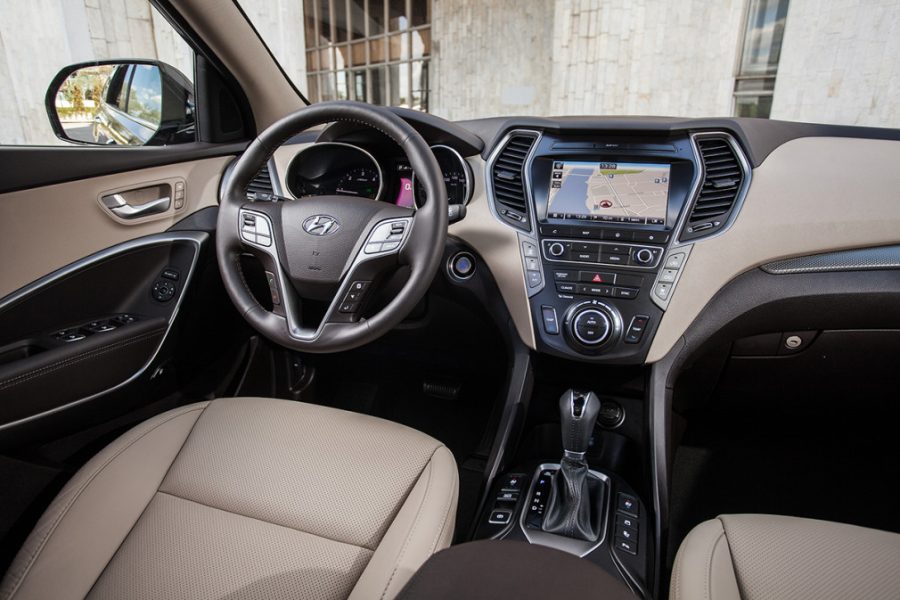
Crossovers are now more distinctive in appearance. The most noticeable difference of "Grand" - vertical LED sections in large chrome brackets, which replaced the lurid squiggles of fog lights. If you look closely at the car, you find the higher cheekbones of the front bumper, the trapezoid of the lower air intake stretched out along the width, tiny grilles under the headlights, thinner radiator grilles. All these seemingly inconspicuous touches in the aggregate surprisingly give the look of the crossover completeness and severity. As if the radiator grill just lacked the fifth bar, and the lamps - LED drawing.
The changes in the cabin are the same as for the younger Santa, which was updated last year - three colors (black, gray and beige), as well as frivolous inserts for carbon fiber. The Infinity audio system control has changed - instead of one large washer, two small knobs have appeared. An impressive list of new options almost completely duplicates the equipment of the Santa Fe Premium, which was updated last year. Exclusive options include bi-xenon headlights with intelligent switching of the high beam, and fabric upholstery of the pillars in the cabin. The equipment of the "Grand" was initially richer: only it still has curtains on the windows of the rear doors and a separate air conditioner for the rear passengers.
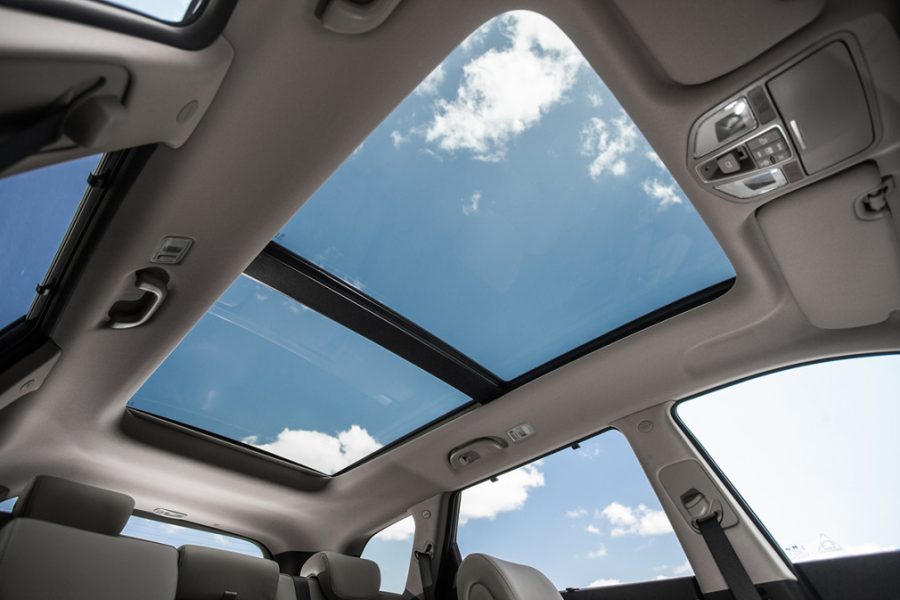
The most surprising thing is that the control panel of the latter is located in the trunk and only passengers of the third row have access to it. Even with such an exclusive function, adults cannot be lured into the gallery - the seat back is low here, and the pillow is very short. The middle couch can be slid forward to free up some legroom, but the ceiling cannot be made higher.
In addition to the suspension, engineers also tweaked the power structure of the Grand Santa Fe's body to increase its rigidity. First of all, this was done to pass the American crash tests of the IIHS insurance institute with a slight overlap, but at the same time, it had a beneficial effect on driving performance. The character of the car remained emphatically light, it does not have the slackness inherent in large crossovers and SUVs.
Petrol Grand Santa Fe with a V-shaped "six" with distributed injection was not very popular in Russia - most of our cars were sold with a turbodiesel. To draw attention to the first option, Hyundai has offered a new V6 borrowed from the Chinese market. It has a smaller volume (3,0 versus 3,3 liters) and direct injection, which should make it more economical. Judging by the passport data, the savings came out small: in the city, the unit burns 0,3 liters less, and on the highway - one tenth of a liter. The average has not changed at all - 10,5 liters. According to the on-board computer, the car consumes a little over 12 liters.
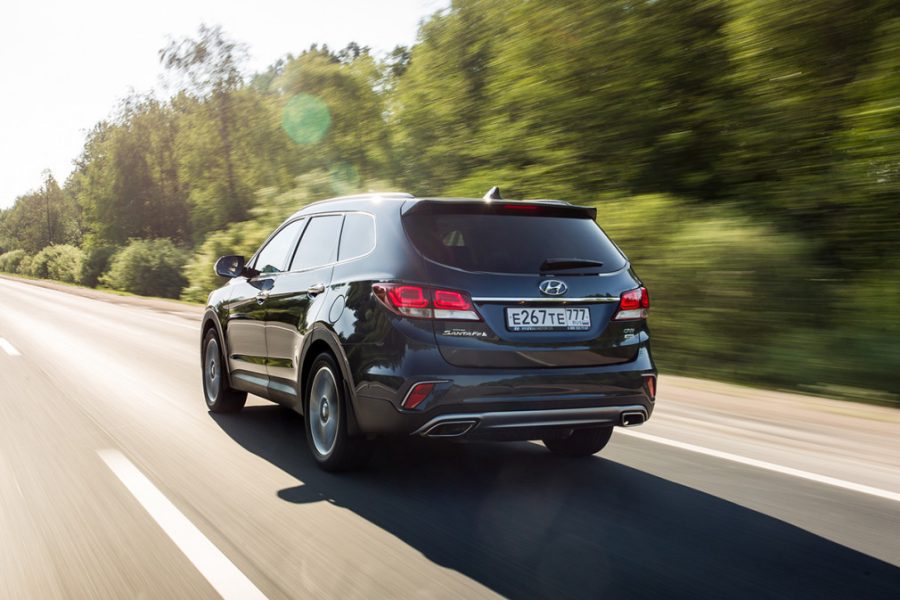
The new motor develops the same 249 hp, which is beneficial from a tax point of view, but it has less peak torque, which could not but affect the dynamics. Up to 100 km / h, the crossover accelerates in 9,2 seconds - half a second slower than with the previous “six”.
The 2,2 liter turbo diesel, on the contrary, has slightly increased in power and torque, in addition, its operating range has increased. In dynamics, it is now worse than the petrol version - 9,9 s to "hundreds", it responds to the accelerator pedal faster, and the impressive torque makes it easy to overtake trucks.
The diesel engine is a significant advantage of the Grand Santa Fe in the segment. Moreover, such a car is noticeably cheaper than a petrol one: now they ask for a pre-styling Grand from $ 29 to $ 156, while the only version with the previous atmospheric "six" volume of 34 liters costs from $ 362.
In a similar price category and Kia Sorento Prime, but with the same engines - the "quartet" of 2,2 liters and V6 with a volume of 3,3 liters - it is tighter and a little more expensive. The rest of the competitors are offered only with gasoline engines, mainly a 6-liter V3,5. The most affordable of all is the Russian-built Nissan Pathfinder, which starts at $32.
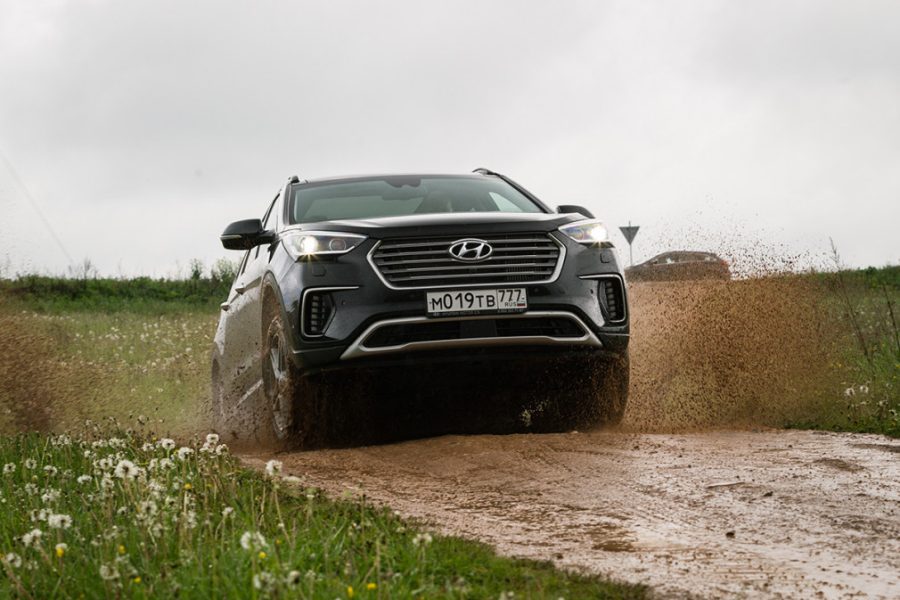
The price list of the updated Grand Santa Fe has not yet been announced, but there is reason to believe that the car will rise in price, and it has room to grow. It is already known that the basic equipment of the car will become richer, and the car itself now looks more expensive.
The update made the Grand Santa Fe crossover more visible and devoid of major flaws. The diesel version became even more convincing. For a complete set, the car lacks only a sonorous name. Hyundai understands this too - the company plans to launch the next off-road flagship under the premium Genesis sub-brand.
